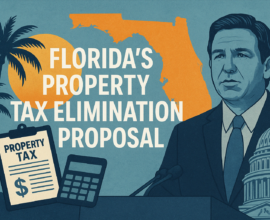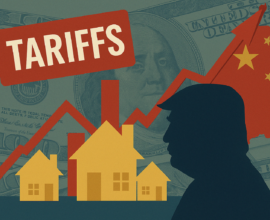Brace Yourselves; Wealthy Millennials are Migrating to These Two States!
In the past few years, we’ve witnessed rates of migration within the United States change in record-setting numbers, including a sizable number of wealthy millennials. Let’s closely examine whose numbers are on the rise, whose are rapidly declining, why this may be happening, and what it all means for you as an investor in the current real estate market.
Income and Migration Figures Analysis
To quantify the statistics surrounding this exodus, analysts considered income, age, and population data collected from across the United States. The report considers anyone between the ages of 26 and 35 years old (born between 1988 and 1997) to be a millennial, and those with annual incomes of $200K+ as part of the target cohort being measured.
The analysis was configured by SmartAsset, a finance company, based on IRS statistics from 2021. Only 2% of millennials made $200,000+ annually according to the data, and yet they comprised 16% of the income in this cohort.
By focusing on the number of individuals in the target age and income range, experts were able to form a larger picture of the migration patterns in recent years and pick up on some trends.
A big concern for many of those in higher income brackets is taxes, especially income taxes.
Net Positive Income Migration States
According to the analysis, the number one state claiming these wealthy millennials is Florida. The analyzed IRS data revealed that 3,391 millennials who claimed an annual income of $200,000 or more on their taxes moved to Florida. While 1,216 individuals in this group moved away from the Sunshine State, it still netted 2,175 of these high earners.
Number two in the report is Texas with a positive net growth of 1,909 wealthy millennials.
The following states fill out the top ten states in the study that these high-earning individuals are flocking to in order of rank: New Jersey, Colorado, North Carolina, Connecticut, Washington, Tennessee, Arizona, and South Carolina.
Migration in many of these states, especially Florida and Texas, has been on the rise for the past few years. Before we examine why they have become such desirable places to live, let’s first look at what states are losing the largest portions of this population.
Net Negative Income Migration States
New York tops the list with a staggering negative 5,062. While 3,943 in this category moved to the state in 2021, an astounding 9,005 moved elsewhere.
Following closely behind New York is California. The state had 4,988 millennials earning $200K+ a year move in, and yet a whopping 9,483 moved away leaving the state with a deficit of 4,495 in this cohort.
The remaining states ranked in the bottom ten by ascending order include Illinois, Massachusetts, Missouri, Louisiana, North Dakota, New Mexico, Delaware, and Alaska. All those listed have net negative income migrations in this segment of the population based on the analysis.
Why Are These High Earners Flocking to Florida and Texas?
The numbers are clear. Based on interviews with some high earners who have recently undergone moves to either Texas or Florida, there are a few reasons pushing millennials to follow suit.
While some blue states, like Colorado, may still be doing well in growing populations within this cohort, several others are are losing their residents to more conservative climates.
Taxes
A big concern for many of those in higher income brackets is taxes, especially income taxes. Often being asked to contribute higher percentages based on their gross income, they pay exorbitant amounts. Neither Florida nor Texas have state income taxes, which lends a lot of appeal to high-income earners regardless of age.
In recent interviews, billionaires, such as Elon Musk, Carl Icahn, David Tepper, and more, have all cited tax reasons as a prominent factor behind their moves.
In California and New York, income tax is required and higher than in some other states. In New York, income tax can rocket up to 12% for some of these high-income earners.
California’s entire state budget relies on these wealthy individuals to contribute substantially through taxes, and the recent loss of many millionaires and billionaires has been cause for concern with state officials. The annual loss of tax revenue in California and New York during the period measured added up to a combined $640 million.
Politics
One of the many reasons these millennials are picking up and transplanting their lives somewhere new is politics. With California and New York at the top of the list losing tax revenue while Florida and Texas are at the top earning it, it’s easy to notice some big differences between the states.
While some blue states, like Colorado, may still be doing well in growing populations within this cohort, several others are are losing their residents to more conservative climates.
State Safety Protocols
No doubt about it, New York was one of the places hit hardest during the pandemic. The state, especially New York City, implemented many lockdown procedures that lasted far longer than in other states with much stricter limitations in an attempt to slow the spread of COVID-19.
This is an important, profitable population and potentially a reason to expand your real estate investment strategy.
Some wealthy individuals have voiced their concern about the lack of freedom being a reason to move to Florida and Texas. The two states are often perceived to have a higher level of personal freedom in this regard.
Future Real Estate Implications
By now, you’re probably wondering what this has to do with you and your real estate investment strategy. If you live in Florida, Texas, or any of the other top ten places gaining these high-earning millennials, you’ll want to sit up and pay attention.
This is an important, profitable population and potentially a reason to expand your real estate investment strategy. While migration patterns do tend to shift over the years, luxury real estate appears to be growing in these markets.
On the flip side, don’t be the last to notice your neighbors are gone in New York, California, or any of the other net negative states.
People are clearly choosing where they want to live, especially with remote work on the rise, younger executives and entrepreneurs can have their office wherever they want with no need to report to headquarters daily.
Will some of these states losing large percentages of high-income earners change their tax policies? Are we in for another housing market crash? Who knows, none of us has a crystal ball, but with this information at your fingertips, you can prepare yourself for whatever impact it may have on your real estate investing strategy.








